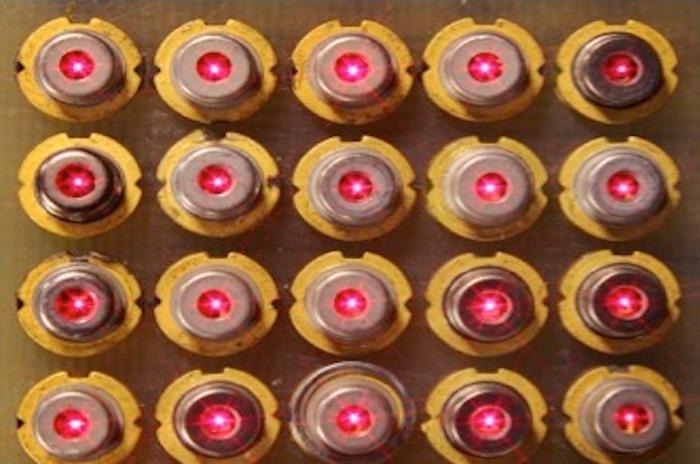Nov 20 2020
At George Washington University, scientists have developed the most advanced vertical-cavity surface-emitting laser (VCSEL) that exhibits record-fast temporal bandwidth.
 Fast, powerful compact lasers: a novel VCSEL for next-generation data centers and sensors. Image Credit: The George Washington University.
Fast, powerful compact lasers: a novel VCSEL for next-generation data centers and sensors. Image Credit: The George Washington University.
They achieved this by integrating several transverse coupled cavities, which improves the laser’s optical feedback. VCSELs have become a crucial method for achieving high-speed and energy-efficient optical interconnects in supercomputers and data centers.
The Situation
VCSELs are considered an essential class of semiconductor laser diodes that power a monolithic laser resonator, which emits light in a direction perpendicular to the surface of the chip. This class of lasers has been gaining considerable attention in the market, thanks to their compact size and high optoelectronic performance.
Since they are miniaturized, these lasers are utilized as an optical source in short-wavelength, high-speed communications, and optical data networks.
High-speed transmission and dense traffic are essential requirements for smart sensor applications in automotive or in data communications, which are allowed by high-speed and compact VCSELs.
But the 3-dB bandwidth, or the speed limit of VCSELs, is restricted by parasitic resistance, thermal effects, nonlinear gain effects, and capacitance.
The Solution
The direct modulation of VCSELs’ cannot go beyond approximately 30 GHz because of nonlinear optical amplification effects called gain relaxation oscillations. This invention paves the way for a breakthrough, novel VCSEL design.
It is vital to carefully control the feedback inside the laser, and thus scientists developed a multi-feedback method by integrating several coupled cavities.
This enabled them to reinforce the feedback called “slow-light,” thereby expanding the temporal laser bandwidth (speed) over the known limit of the relaxation oscillation frequency.
The innovation is revolutionary since the direct feedback from every cavity just requires to be moderate and can be regulated accurately through the coupled cavities, thus enabling a higher degree of design freedom. After the execution of this coupled-cavity scheme, a resulting modulation bandwidth in the 100 GHz range is anticipated.
From the Researchers
Here we introduce a paradigm-shift in laser design. We utilize a novel coupled cavities approach to carefully control the feedback to the laser achieved by significantly slowing the laser light down. This coupled cavity approach adds a new degree of freedom for laser design, with opportunities in both fundamental science and technology.
Volker Sorger, Associate Professor of Electrical and Computer Engineering, George Washington University
According to Hamed Dalir, co-author of the study and inventor of the technology, “This invention is timely since demand for data services is growing rapidly and moving towards next generation communication networks such as 6G, but also in automotive as proximity sensor or smart phone’s face ID. Furthermore, the coupled cavity system paves a way for emerging applications in quantum information processors such as coherent Ising machines.”
Journal Reference:
Heidari, E., et al. (2020) Hexagonal transverse-coupled-cavity VCSEL redefining the high-speed lasers. Nanophotonics. doi.org/10.1515/nanoph-2020-0437.